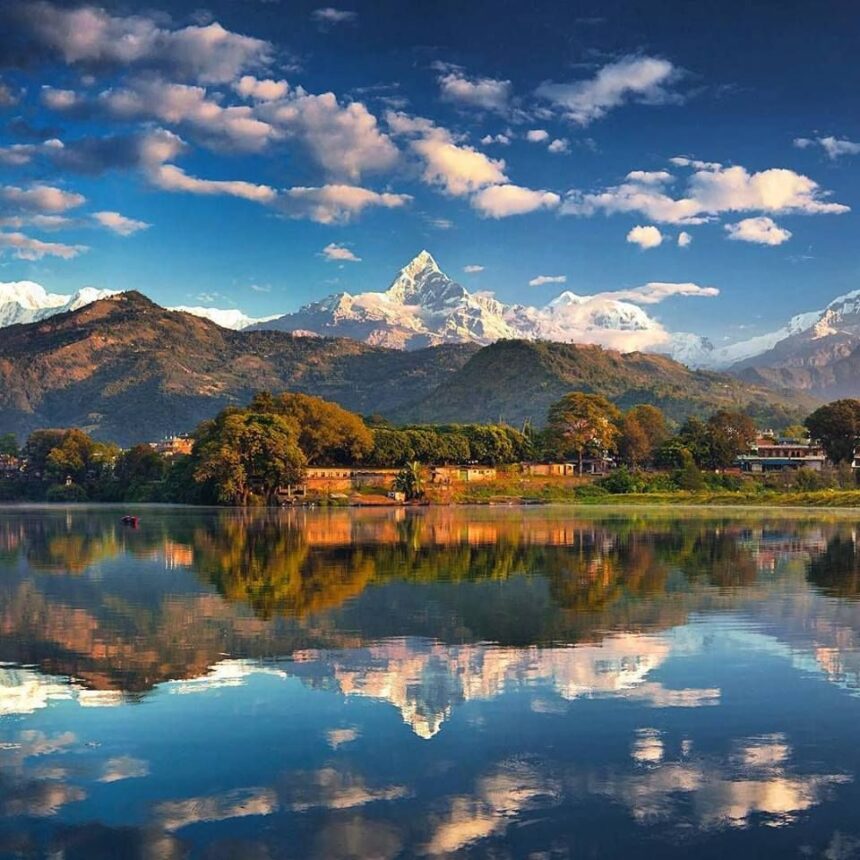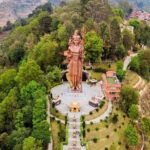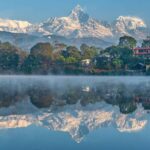Introduction
Sarangkot, located near Pokhara in Nepal, is a popular hilltop destination renowned for its breathtaking views of the Annapurna and Dhaulagiri mountain ranges. It is also a prime spot for watching the sunrise over the Himalayas, paragliding, and experiencing Nepalese culture and natural beauty.
- Introduction
- History of Sarangkot
- Fascinating Facts About Sarangkot
- Timeline of Sarangkot
- Significance of Sarangkot
- 1. Natural Significance
- 2. Adventure & Tourism
- 3. Cultural Importance
- 4. Spiritual & Inspirational Value
- 5. Economic Contribution
- Observance & Cultural Activities
- Wishing at Sarangkot
- Daily Life Impact
- FAQs About Sarangkot
- Important Tips for Visitors
- Importance in Society
- Conclusion
For travelers seeking cheap vacation ideas with adventure and nature, Sarangkot provides a perfect blend of scenic beauty, outdoor activity, and cultural immersion. Its tranquil environment and panoramic viewpoints make it a must-visit destination for both casual tourists and adventure enthusiasts.
This guide explores history, fascinating facts, timeline, significance, observance, wishing, FAQs, daily life impact, and societal importance, written in a human-friendly and engaging style.
History of Sarangkot
Early Settlement: Historically, Sarangkot was home to local hill communities, including Gurung and Magar ethnic groups.
Tourism Development: Gained popularity in the late 20th century as trekking and paragliding tourism expanded in the Pokhara region.
Adventure Hub: Today, it is recognized for adventure tourism, including paragliding, trekking, and sunrise viewpoints.
Cultural Preservation: Despite its popularity, local communities maintain traditional practices, festivals, and architecture.
Fun Fact: The name “Sarangkot” is believed to originate from local languages, meaning “place of refuge or lookout,” perfectly reflecting its panoramic vantage points.
Fascinating Facts About Sarangkot
Sunrise Views: Offers stunning views of Annapurna, Machapuchare, Dhaulagiri, and Fishtail mountains at sunrise.
Paragliding Destination: Internationally recognized as a paragliding hub with safe and scenic launch sites.
Short Treks: Accessible via 1–2 hour hikes from Pokhara, suitable for casual trekkers and families.
Panoramic Viewpoints: Offers 360-degree views including Phewa Lake, Pokhara city, and surrounding hills.
Local Villages: Experience Gurung and Magar villages, with homestays and local cuisine, providing cultural immersion.
Timeline of Sarangkot
Ancient Era: Settled by local hill communities for agriculture and grazing.
Late 20th Century: Tourism development begins; trekkers and adventure enthusiasts discover the region.
2000s: Paragliding introduced; Sarangkot becomes a popular adventure and sunrise destination.
2010s: Infrastructure improvements support eco-friendly tourism, homestays, and viewpoints.
Present: Continues to attract nature lovers, photographers, and adventure travelers from around the world.
Significance of Sarangkot
1. Natural Significance
Sarangkot provides uninterrupted Himalayan vistas, lush hill slopes, and rich biodiversity, making it an ecologically important viewpoint.
2. Adventure & Tourism
Paragliding, trekking, and photography make Sarangkot a prime spot for adventure tourism, contributing significantly to the local economy.
3. Cultural Importance
Passing through traditional Gurung and Magar villages, travelers gain insight into local lifestyle, architecture, and customs.
4. Spiritual & Inspirational Value
Watching the sunrise or meditating at Sarangkot fosters peace, mindfulness, and personal reflection.
5. Economic Contribution
Supports homestays, guides, porters, local food vendors, and handicrafts, generating sustainable income for the community.
Observance & Cultural Activities
Local Festivals: Gurung and Magar communities celebrate festivals such as Tamu Lhosar and Maghe Sankranti, offering travelers cultural immersion opportunities.
Daily Life Practices: Farming, animal grazing, and traditional craftsmanship continue in local villages, showcasing authentic hill lifestyle.
Community Tourism: Homestays allow participation in cooking, traditional rituals, and village tours.
Guided Adventure Tours: Educational experiences include ecology, wildlife, and sustainable tourism practices.
Wishing at Sarangkot
Visitors often make wishes while enjoying sunrise views or meditating on the hilltop:
🌄 “May every day bring clarity, hope, and inspiration.”
🕉️ “Wishing for peace, joy, and well-being for all beings.”
🌸 “May nature’s beauty remind me of gratitude and mindfulness.”
These practices enhance the spiritual and personal connection to the Himalayan environment.
Daily Life Impact
Sarangkot influences trekkers, locals, and society:
For Visitors: Offers adventure, scenic beauty, and cultural interaction.
For Locals: Generates income through homestays, guiding, paragliding services, and handicrafts.
For Society: Promotes eco-tourism, heritage preservation, and responsible travel practices.
FAQs About Sarangkot
Q1: How do I reach Sarangkot from Pokhara?
A: By jeep, taxi, or a 1–2 hour trek, depending on preference and fitness level.
Q2: When is the best time to visit?
A: Spring (March–May) and Autumn (September–November) offer clear skies and pleasant weather.
Q3: Is it suitable for beginners in trekking?
A: Yes, the trails are moderate and accessible, suitable for families and casual trekkers.
Q4: Can I do paragliding here?
A: Absolutely! Sarangkot is a world-renowned paragliding destination.
Q5: Are there accommodations available?
A: Yes, homestays, guesthouses, and budget lodges are available in and around Sarangkot.
Important Tips for Visitors
Wear comfortable shoes and warm clothing in the early morning.
Carry water, snacks, and sun protection.
Hire local guides or join paragliding tours for safety and knowledge.
Respect village customs and environment, especially in residential areas.
Arrive early to catch the sunrise and enjoy panoramic views.
Importance in Society
Sarangkot is culturally, economically, and environmentally significant:
Cultural Preservation: Maintains Gurung and Magar traditions, festivals, and village life.
Economic Support: Provides sustainable income through tourism, homestays, and adventure services.
Educational Value: Offers insights into ecology, Himalayan culture, and adventure tourism.
Spiritual & Inspirational Role: Encourages mindfulness, reflection, and nature appreciation.
Community Pride: Strengthens local identity, heritage awareness, and eco-tourism practices.
Conclusion
Sarangkot is more than a hilltop; it is a gateway to Himalayan adventure, natural beauty, and cultural richness. Affordable, accessible, and inspiring, it provides travelers with a memorable blend of scenic sunrise views, paragliding thrills, and cultural immersion.
🌄 Wishing for You: May your visit to Sarangkot inspire courage, gratitude, and mindfulness, letting every sunrise, mountain view, and village encounter enrich your journey with adventure, reflection, and cultural connection.








